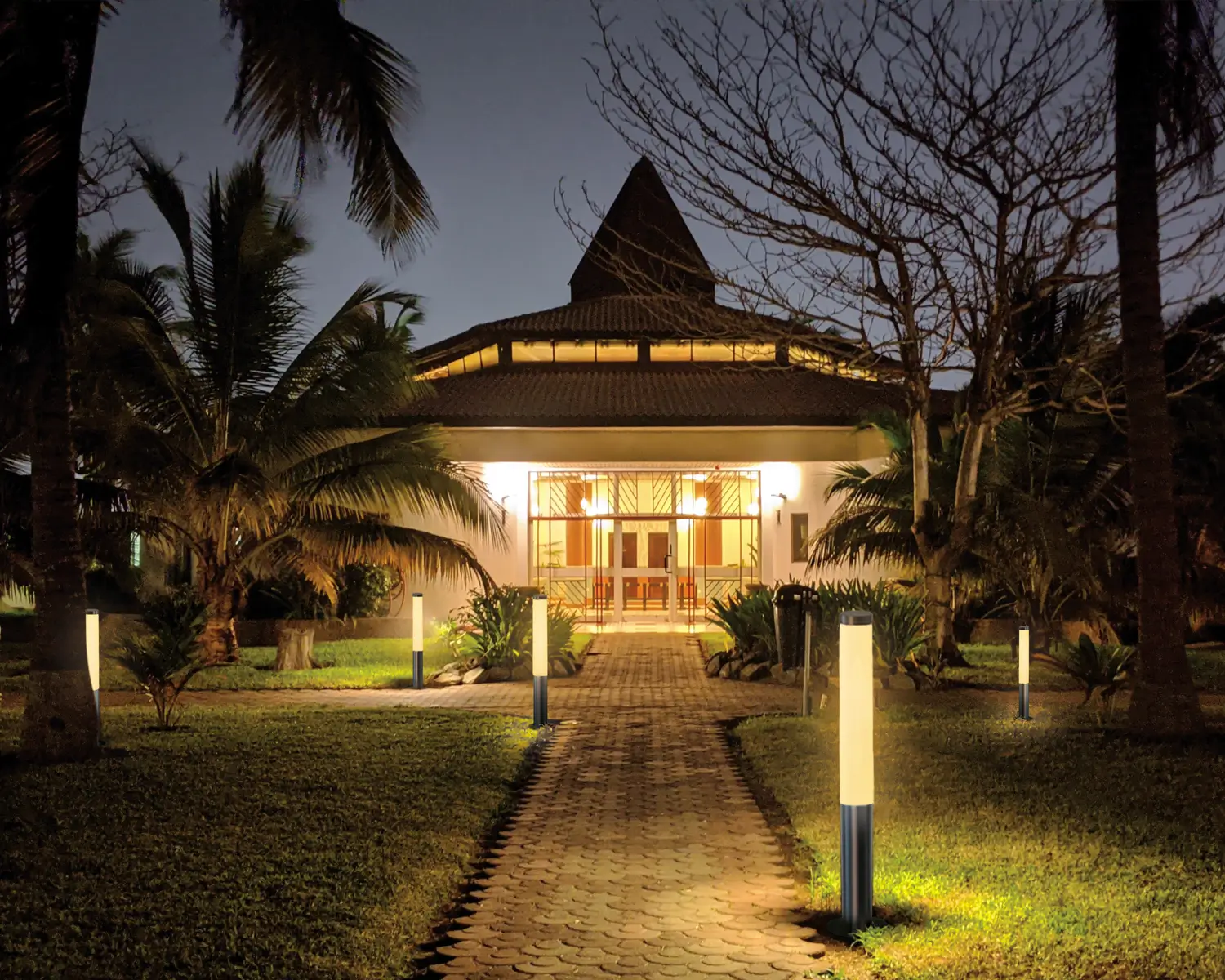
August 2, 2024
Transforming Outdoor Spaces with LED Lighting
Outdoor spaces have become an extension of our living and working environments, and the right lighting can dramatically enhance their functionality and aesthetic appeal. LED lighting, with its energy efficiency, versatility, and advanced technology, is at the forefront of this transformation. This blog delves into how LED lighting is revolutionising outdoor spaces, from residential gardens to commercial landscapes, and highlights the benefits and creative possibilities it offers.
The Benefits of LED Lighting for Outdoor Spaces
Energy Efficiency and Cost Savings
One of the primary advantages of LED lighting is its superior energy efficiency. LEDs consume up to 75% less energy than traditional incandescent and halogen lights, leading to significant cost savings on electricity bills. For outdoor spaces that require long hours of illumination, such as gardens, pathways, and commercial exteriors, the energy savings can be substantial. Additionally, the long lifespan of LEDs—often exceeding 50,000 hours—reduces the frequency of replacements and maintenance costs.
Durability and Weather Resistance
Outdoor lighting must withstand various weather conditions, from rain and snow to extreme temperatures. LED lights are designed to be highly durable and resistant to weather-related damage. They are typically housed in robust, weatherproof casings that protect them from moisture, dust, and impacts. This makes LEDs a reliable choice for outdoor environments, ensuring consistent performance and longevity.
Enhanced Safety and Security
Proper outdoor lighting enhances safety and security by improving visibility and deterring potential intruders. LED lights provide bright, clear illumination, making it easier to navigate pathways, stairs, and driveways at night. Motion-activated LED lights are particularly effective for security purposes, as they can alert homeowners to movement around their property. For commercial spaces, well-lit exteriors can reduce the risk of accidents and create a safer environment for employees and visitors.
Environmental Sustainability
LED lighting is an environmentally friendly option, producing less carbon emissions due to its energy efficiency. Unlike traditional bulbs, LEDs do not contain hazardous materials like mercury, making them safer for the environment. Their long lifespan also means fewer bulbs end up in landfills, contributing to waste reduction. Businesses and homeowners looking to reduce their ecological footprint can achieve their sustainability goals by switching to LED outdoor lighting.
Creative Applications of LED Lighting in Outdoor Spaces
Landscape and Garden Lighting
LED lighting can transform gardens and landscapes into enchanting nighttime environments. Here are some creative applications:
Accent Lighting: Use LED spotlights to highlight specific features such as trees, sculptures, or water fountains. Accent lighting creates focal points and adds depth to the landscape.
Pathway Lighting: LED path lights guide visitors along walkways and driveways, enhancing safety and creating a welcoming ambiance. Solar-powered LED path lights are an eco-friendly option that harnesses energy from the sun.
Deck and Patio Lighting: LEDs can be integrated into decking and patio designs, providing subtle illumination for outdoor gatherings. Recessed LED lights in the floor or railing create a sophisticated look.
Underwater Lighting: LED lights can be used in ponds, pools, and water features to create stunning visual effects. Submersible LEDs are waterproof and available in various colors, adding a magical glow to aquatic environments.
Architectural and Façade Lighting
LED lighting can enhance the architectural features of buildings and structures:
Wall Wash Lighting: Use LED wall washers to evenly illuminate building facades, highlighting textures and architectural details. This technique adds drama and visual interest to commercial buildings and residential exteriors.
Uplighting: Place LED uplights at the base of columns, pillars, and walls to create a striking effect. Uplighting can emphasize the height and grandeur of structures, making them stand out at night.
Color-Changing LEDs: RGB LED lights allow for dynamic color changes, enabling businesses to create vibrant displays for events, holidays, and special occasions. Programmable LEDs can cycle through different colors, patterns, and intensities.
Public and Commercial Spaces
LED lighting is ideal for enhancing public and commercial outdoor spaces:
Street and Parking Lot Lighting: LED streetlights and parking lot lights provide bright, uniform illumination, improving visibility and safety for pedestrians and drivers. LEDs' directional lighting reduces light pollution by focusing light where it's needed.
Park and Plaza Lighting: In public parks and plazas, LED lighting can create inviting and well-lit areas for relaxation and recreation. Decorative LED fixtures, such as lanterns and bollards, add charm and functionality to these spaces.
Signage and Wayfinding: LED lights are used in illuminated signs and wayfinding systems, helping visitors navigate large commercial complexes, campuses, and public areas. Bright, clear signage enhances the overall user experience.
Smart and Adaptive Lighting
The integration of smart technology with LED lighting opens up new possibilities for outdoor spaces:
Smart Control Systems: LED lights can be controlled remotely via smartphones, tablets, or dedicated control panels. This allows users to adjust brightness, color, and timing from anywhere, providing convenience and flexibility.
Adaptive Lighting: Smart LED systems can adapt to changing conditions, such as the time of day or weather. For example, lights can dim during moonlit nights or brighten during foggy conditions. Motion sensors can activate lights only when needed, conserving energy.
Integration with IoT: The Internet of Things (IoT) enables LED lights to communicate with other smart devices, creating a cohesive and automated outdoor environment. Integration with security cameras, weather stations, and smart home systems enhances functionality and user experience.
Conclusion
LED lighting has the power to transform outdoor spaces, making them more functional, attractive, and sustainable. Its energy efficiency, durability, and versatility make it the ideal choice for a wide range of applications, from residential gardens to commercial landscapes. By embracing the benefits and creative possibilities of LED lighting, businesses and homeowners can enhance the beauty and utility of their outdoor environments while contributing to a greener future. As LED technology continues to evolve, the potential for innovation and improvement in outdoor lighting is limitless, promising even more exciting developments in the years to come.
